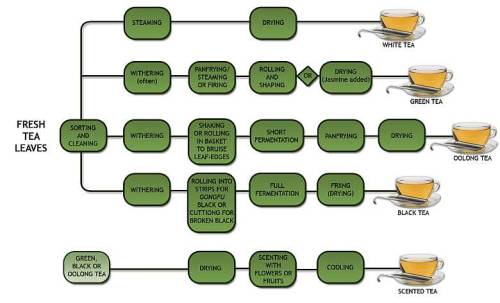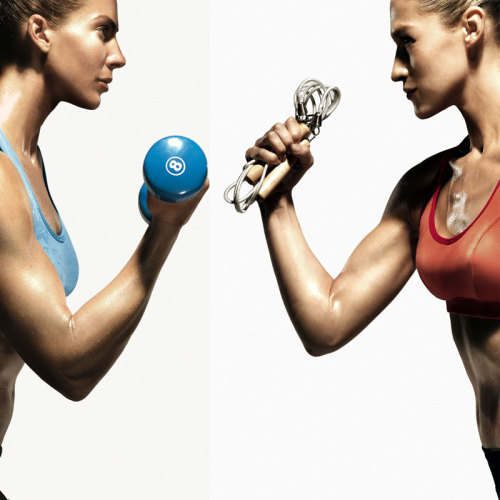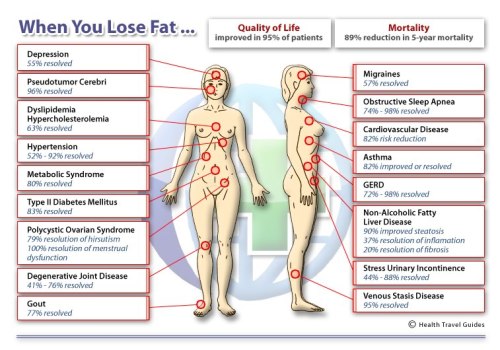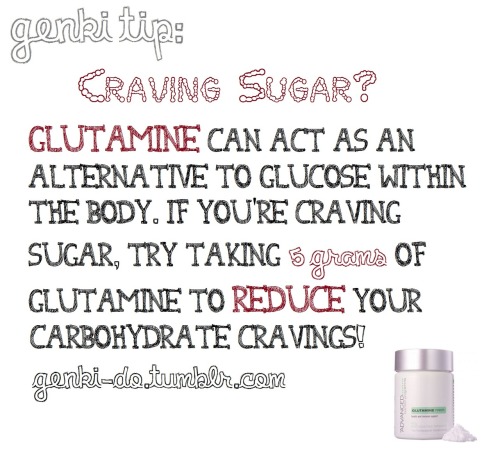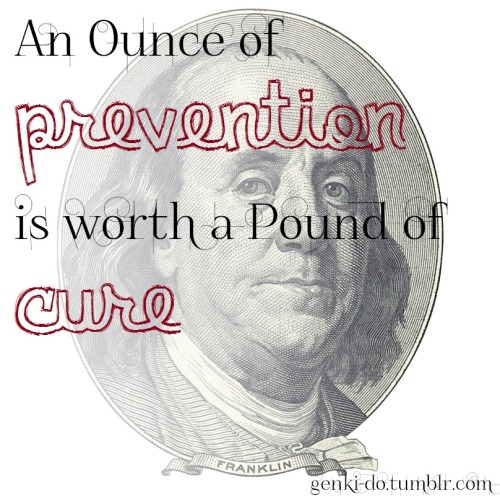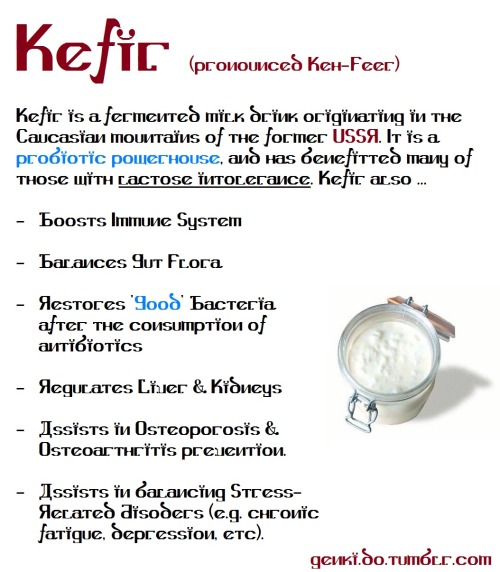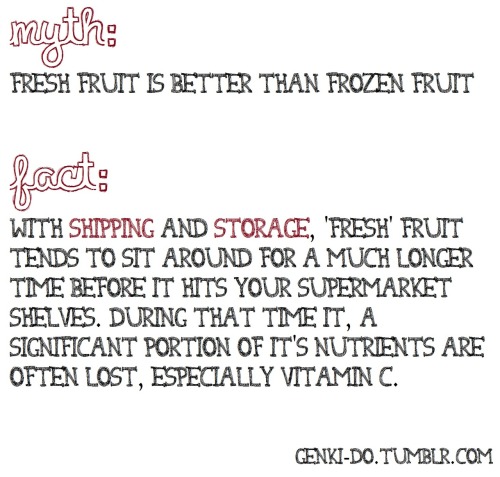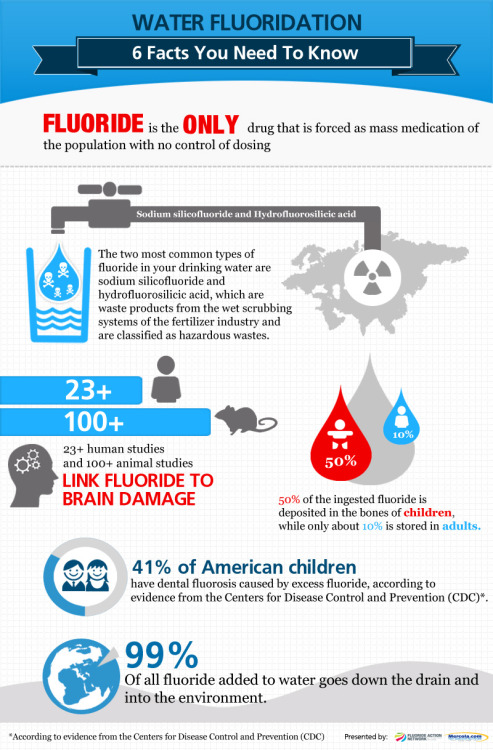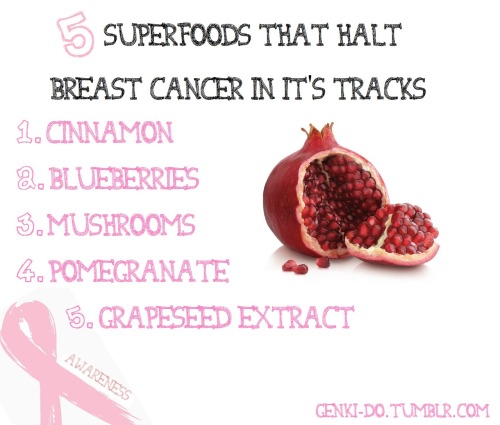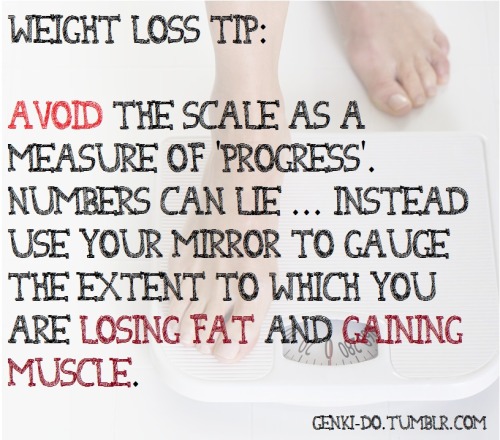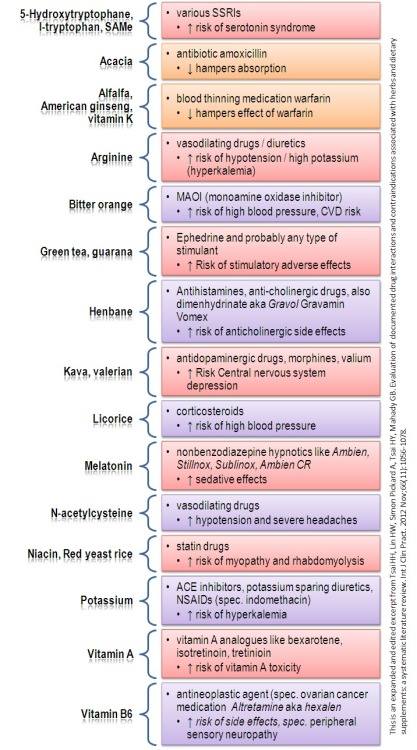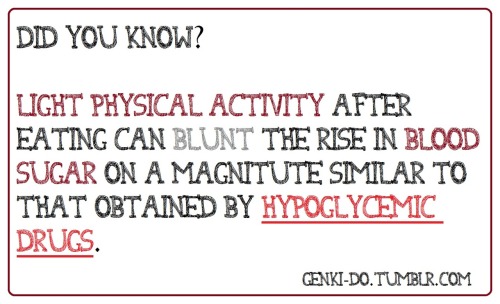I must've been a good boy this year, because Santa brought me all the things I asked for! This and an inordinate collection of classical literature made up my presents this year ... Looks like I've got my reading cut out for me!
Sunday, 30 December 2012
Friday, 28 December 2012
Four Reasons Why You Need Kettlebell Training
The kettlebell or 'girya' (Russian: ги́ря) has long been recognized as a powerful tool in the quest for strength, balance, flexibility and endurance. Legendary strongmen Eugene Sandow and the Saxton Brothers trained with them in the early 1900's. Weightlifters such as Vasily Alexeyev (the first man to clean and jerk 500lbs) was known to use kettlebells in his training. But, if that wasn't enough incentive for you to continue reading, then rent the film 300 - Gerard Butler used kettlebells in preparation for his role as King Leonidas of Sparta.
The Benefits of Kettlebell Training:
- Burn Calories, Like a Furnace ...
- Potentially Decrease the Risk of Low-Back Injury ...
- Romanian Deadlifts? Try Kettlebell Swings ...
- Improvements in Maximal and Explosive Strength ...
The Take-Away:
Although the earliest documented mention of kettlebells dates back as early as the 1700's, researchers are only now taking greater interest in their potential benefits in the sphere of both physical culture and rehabilitation. This is where we must apply our critical thinking skills to decide on their benefit. Anybody who has ever completed a 30 minute circuit with a pair of kettlebells will testify to their effectiveness. Not only do they turn your body into a calorie burning inferno, but they stimulate both the aerobic and anaerobic systems of your body. As we know, stimulating the anaerobic system is important during periods of calorie restriction to signal to the body that muscle-mass is 'off limits'. This makes kettlebell training a great time-saver, as well as an ideal form of exercise for those dieting to lose body-fat.
Thus, whether you're a martial artist looking to improve your explosiveness, a weightlifter looking for some alternative training methods that won't compromise strength or just a weekend warrior looking to get lean and ripped, kettlebells have something for you. Remember, it's important to seek instruction when learning any new movement! Kettlebell exercises are no different, however - once you've mastered the basics they will continue reward, impress and outshine many other forms of training.
Reference:
Schnettler, C., Porcarci, & Foster, C. (2010). Kettlebells: Twice the results in half the time? ACE Fitness Matters, 10-20.
Jay, K., Jakobsen, M., et al. (2012). Effects of kettlebell training on postural coordination and jump performance: A randomized controlled trial. Journal of Strength & Conditioning Research, doi: 10.1519/JSC.0b013e318267a1aa.
Zebis, M.K., Skotte, J., Andersen, C.H., Mortensen, P., Petersen, M. H., Viskaer, T.C., Jensen, T.L., Bencke, J., & Andersen, L.L. (2012). Kettlebell swing targets semitendinosus and supine leg curl targets biceps femoris: An EMG study with rehabilitation implications. Br J Sports Med, Epub ahead of print.
Lake, J.P., & Lauder, M.A. (2012). Kettlebell swing training improves maximal and explosive strength. J Strength Cond Res, 26(8), 2228-2233.
Manocchia, P., Spierer, D.K., Lufkin, A.K., Minichiello, J., & Castro, J. (2012). Transference of kettlebell training to strength, power and endurance. J Strength Cond Res. [Epub ahead of print].
Labels:
Fitness
Thursday, 20 December 2012
Green Tea, Exercise & Fat Oxidation
Most people, even those not sporting any formal qualifications in the field of medicine would have heard of catechins. While these antioxidants can be found in a range of foods including berries and in cocoa products (i.e. chocolate), the class of catechin thought to be most pharmacologically active (EGCG) is found in the greatest concentration in the leaves of the camellia sinensis plant (a.k.a. green tea).
So, why do scientists seem to pay such close attention to green tea in their studies? The short answer is that tea catechins are under constant examination due to the strong association of tea with long life and health in many ancient cultures.
However, green tea extract has also been found to improve exercise performance, increase fat oxidation and prevent obesity in animal models. These effects will be noteworthy to not only individuals seeking to attain favourable body composition, but those struggling with obesity or insulin issues.
The Study At Hand ...
Most studies with green tea have been performed in animal models. As such, it was a refreshing change to see researchers at the University of Birmingham investigate the effects of green tea extract ingestion on fat oxidation and glucose tolerance in humans.
What exercise aficionado's will find of interest is that the study assessed green tea's effects on these factors during moderate-intensity exercise.
Before I 'reveal' the study's conclusions, let me point out some points on methodology for the reader to consider ...
Methodological Notes:
- Each participant completed 30 minutes of cycling exercise at 50% of their VO2 Max which, by no means, would be considered 'strenuous'.
- Moreover, the Green Tea Extract (GTE) used in the study contained a standardized extract 340mg polyphenols and 136mg EGCG and were ingested in the morning, around 1 hour before the bout of exercise.
- In terms of body composition, the participants had an average BMI of 23.9 (which tells us simply that they weren't considered 'obese' by this standard). However, no mention was made about actual fat to muscle mass ratios, etc. Thus, it is difficult to say anything except that these participants represented your 'average joes' of society.
The Good Part:
The results of the study showed that green tea extract increased whole-body fat oxidation compared to the placebo. In addition, the participants used an extra 5% fat in their energy expenditure during exercise after taking the supplement.
The study also showed that GTE ingestion increased insulin sensitivity by 13% and reduced the insulin response to a glucose load by 15%, which is promising news for Type II diabetics and those with insulin resistance.
Real World Applications:
From the results of this study, and others of similar nature, it would appear that supplementing with green tea extract can increase fat oxidation (fat burning), increase insulin sensitivity and improve glucose tolerance.
HOWEVER
Let me be frank in clarifying the fact that green tea is by no means a 'magic bullet'. Individuals will still have to adhere to a sensible diet and exercise regime in order to see it's effects on body composition. Nevertheless, the results are promising, particularly for those who DO require that extra 5% fat oxidation in order to achieve specific goals (e.g. competing bodybuilders).
For those seeking the extra boost, a good starting point is the methodological protocol identified by Venables et al. (2008) in their study. The extract, taken 1 hour prior to exercise should help with all of the issues highlighted, and ideally allow you to reap the benefits of this successful human trial.
Reference:
Venables, M. C., Hulston, C. J., Cox, H. R., Jeukendrup, A. E. (2008). Green tea extract ingestion, fat oxidation, and glucose tolerance in healthy humans. The American Journal of Clinical Nutrition, 87: 778-784.
Labels:
Fitness,
Health,
Nutrition,
Supplements
Tuesday, 18 December 2012
Fact or Fiction: Zeolite & Detoxification
Since the 1940's, countless synthetic compounds have been prepared and introduced into the world to assist in various industrial, domestic and personal practices. While little forethought was initially given to the long-term effects of these manufactures compounds, years later we have begun to witness the negative health consequences of this chemical 'revolution' (Genius, 2011). It is only in recent years that scientists have started to look closely at the negative health effects that cumulative exposure to various toxins through inhalation, ingestion, dermal application, injection, surgical implantation and transmission through olfactory system have on the human body.
As a result of the escalating toxicant exposure and the accumulation of toxins within both individual and population groups, science is frantically working to undo the damage they helped to engineer.
While detoxifying the body may seem like just a celebrity fad, it is actually something that has been practiced by various cultures in differing forms throughout the centuries, and due to the toxic chemicals we ingest daily - it is certainly something that we should all consider.
However, with the myriad of information and misinformation out there, it once again becomes a question of: 'what works?' & 'what doesn't?'
Reference:
Genius, S. J. (2011). Elimination of persistent toxicants from the human body. Human and Experimental Toxicology, 30(1), 3-18.
Genius, S.J., Bikholz, D., Ralitsch, M., & Thibault, N. (2010). Human detoxification of perfluorinated compounds. Public Health, doi: 10.1016/j.puhe.2010.03.002
Ivkovic, S., Deutch, U., Silberbach, A., Walraph, E., & Mannel, M. (2004). Dietary supplementation with the tribomechanically activated zeolite clinoptilolite in immunodeficiency: Effects on the immune system. Advances in Therapy, 21(2), 135-148.
Andronikashvili, T., Pagava, K., Kurashvili, T., & Eprikashvili, L. (2009). Possibility of application of natural zeolites for medicinal purposes. Bulletin of the Georgian National Academy of Sciences, 3(2), 158-167.
Figure 1. Categories of Potentially toxic chemicals
As a result of the escalating toxicant exposure and the accumulation of toxins within both individual and population groups, science is frantically working to undo the damage they helped to engineer.
DETOX!
While detoxifying the body may seem like just a celebrity fad, it is actually something that has been practiced by various cultures in differing forms throughout the centuries, and due to the toxic chemicals we ingest daily - it is certainly something that we should all consider.
However, with the myriad of information and misinformation out there, it once again becomes a question of: 'what works?' & 'what doesn't?'
Zeolite
If you spend any reasonable time 'Googling' popular detox methods, you'll no doubt come across this 'revolutionary' new approach for cleansing the human body. Zeolite is primarily used in the purification of water and soil but due to the hysteria following the Fukushima nuclear disaster, Zeolite has been marketed as the next wonder supplement in helping to remove toxins such as mercury, lead, arsenic, pesticides and even radioactive isotopes.
Figure 2. Zeolite Crystal
Zeolite in Research
It is thought that Zeolite 'traps' toxins within it's honeycomb-like structure and allows them to be eliminated from the body through urine, swear and feces. The reality is a little less 'attractive' (from a marketing point of view).
Currently, animal research suggests that use of Zeolite is safe and may have potent effects with mycotoxins. Studies have also found that the compound has the ability to bind some toxicants and heavy metals in water and soil. However, virtually no human clinical trials have been conducted on it's detoxification properties.
One study, looking at human detoxification of perfluorinated compounds (PFC - found in Teflon cookware, various 'non stain' oils and compounds) found that Zeolites do not appear to be effective means of facilitating the excretion of these compounds.
Any current evidence of it's effectiveness in the area of 'detox' is purely anecdotal in nature.
Any Benefits to Zeolite?
Before we dismiss the volcanic rock crystal as completely 'bunk', it is important to note that accumulating evidence from preclinical studies and the first human trials suggest that Zeolite supplementation can assist in modulating the immune system such that the effects of primary treatments of a variety of immunodeficiency disorders are enhanced.
The Verdict on Zeolite:
To supplement or not is ultimately your choice. I've presented you with the facts as they currently stand. However,if you decide to take Zeolite note that is has been deemed GRAS (Generally Recognised As Safe) by the FDA.
Ultimately, my take on the supplement is:
Watch this space! But, don't be fooled by marketing hype ...
Reference:
Genius, S. J. (2011). Elimination of persistent toxicants from the human body. Human and Experimental Toxicology, 30(1), 3-18.
Genius, S.J., Bikholz, D., Ralitsch, M., & Thibault, N. (2010). Human detoxification of perfluorinated compounds. Public Health, doi: 10.1016/j.puhe.2010.03.002
Ivkovic, S., Deutch, U., Silberbach, A., Walraph, E., & Mannel, M. (2004). Dietary supplementation with the tribomechanically activated zeolite clinoptilolite in immunodeficiency: Effects on the immune system. Advances in Therapy, 21(2), 135-148.
Andronikashvili, T., Pagava, K., Kurashvili, T., & Eprikashvili, L. (2009). Possibility of application of natural zeolites for medicinal purposes. Bulletin of the Georgian National Academy of Sciences, 3(2), 158-167.
Labels:
Health,
Supplements
Monday, 17 December 2012
Curcumin ... A Potential Fluoride Shield
The Fluoridation of drinking water has been hailed as one of the greatest band-aid solutions *ahem* medical successes of the 20th Century. Despite increasing concerns that the popular distribution of fluoride in drinking water and food may result in adverse health effects (Cicek et al., 2005), the Dental Associations of the world (including the ADA) are unwavering in their defence of the process of water fluoridation.
I don't question sodium fluoride's efficacy in the prevention and control of dental cavities. However, it seems that the focus on dental hygiene appears to be impairing the medical orthodoxy's ability to see the forest of greater human health risks including heart disease, obesity, depression and IQ deficits in children, for the trees. Fluoride ions can easily spread from the lungs and the gastrointestinal tract to the blood which means anyone concerned with more than just preventing cavities should be interested in methods of either reducing their consumption of the substance or counteracting it's effects.
References:
Nabavi, S. F., Moghaddam, A. H., Eslami, S., & Nabavi, S. M. (2012). Protective effects of curcumin against sodium fluoride-induced toxicity in rat kidneys. Biol Trace Elem Res, 145(3), 369-374.
Cicek, E., Aydin, G., Akdogan, M., Okutan, H. (2005). Effects of chronic ingestion of sodium fluoride on myocardium in a second generation of rats. Hum Exp Toxicol, 24, 79–87.
Tiwari, H., Rao, M. V. (2010). Curcumin supplementation protects from genotoxic effects of arsenic and fluoride. Food Chem Toxicol, 48(5),1234–1238.
I don't question sodium fluoride's efficacy in the prevention and control of dental cavities. However, it seems that the focus on dental hygiene appears to be impairing the medical orthodoxy's ability to see the forest of greater human health risks including heart disease, obesity, depression and IQ deficits in children, for the trees. Fluoride ions can easily spread from the lungs and the gastrointestinal tract to the blood which means anyone concerned with more than just preventing cavities should be interested in methods of either reducing their consumption of the substance or counteracting it's effects.
The Wonder Spice?
Curcumin has a long history of use as a medicinal food due to it's anti-inflammatory, antioxidant, chemoprotective and chemotherapeutic activities. But recent research suggests that curcumin may also have genoprotective effects against sodium fluoride induced genotoxicity (Tiwari & Rao, 2010).
The Study ...
Several studies have attempted to evaluate exactly HOW protective curcumin is against the oxidative stress caused by fluoride in the kidneys of rats. According to the results, 1 week daily exposure with sodium fluoride at 600 ppm (parts per million) through drinking water caused abnormality in the kidneys of the rates. Without going into too much medical jargon, treatment with curcumin at doses of 10 and 20mg/kg (equivalent of 1.62mg & 3.24mg/kg of curcumin in humans) restored the activity of various enzymatic antioxidants and normalized other markers in the rat kidney tissues.
The Take-Away:
Unlike the rats in this study, the Australian Dental Association only subjects us to drinking water that contains fluoride levels of 1ppm. However, lets take this in conjunction with products such as toothpaste, which contains between 1,000ppm and 1,450ppm of fluoride as well as almost anything we eat or drink (see http://www.fortcollinscwa.org/pages/fluoride.htm).
Here, the relevance of this study becomes somewhat more poignant. I, for one, don't think that daily supplementation with a mere 275.4mg of curcumin (3.24mg*85kg for an average male) is a large price to pay for the benefits it seems to offer.
Naturally, more toxicological studies on this natural product are needed. However, the potent protective effects curcumin offers in a wide range of health-related areas makes it a product that should be a consistent staple in your spice rack.
Note: Remember to always buy organic, even when it comes to herbs and spices to ensure you're getting the best quality product and the most 'bang-for-your-buck'!
Nabavi, S. F., Moghaddam, A. H., Eslami, S., & Nabavi, S. M. (2012). Protective effects of curcumin against sodium fluoride-induced toxicity in rat kidneys. Biol Trace Elem Res, 145(3), 369-374.
Cicek, E., Aydin, G., Akdogan, M., Okutan, H. (2005). Effects of chronic ingestion of sodium fluoride on myocardium in a second generation of rats. Hum Exp Toxicol, 24, 79–87.
Tiwari, H., Rao, M. V. (2010). Curcumin supplementation protects from genotoxic effects of arsenic and fluoride. Food Chem Toxicol, 48(5),1234–1238.
Calorie Myth-Buster: Why 6 Servings of Grains a Day Won't Help Keep The Weight Away
Whenever the topic of nutrition and weight-loss arise in conversation (or in the media), it seems almost inevitable that some individual will attempt to demonstrate their indoctrination (*ahem*), excuse me … their intelligence, by bringing up the popular concept that a calorie is a calorie.
When that time arises, you may find yourself wanting to pull your hair out, bang your head against a wall or scream at the stupidity of their argument.
OR
You can remember four words which will see you in good stead in enlightening this well-meaning soul: Kekwick & Pawan, 1956. This is by far one of my favourite studies debunking the idea that weight-loss is a magical equation of creating some calorie deficit regardless of macro-nutrient composition.
The Study:
In their study, they compared 3 diets and their effects on weight-loss in obese participants. The one most relevant to us is ‘DIET No 2’. In this condition participants were fed isocaloric diets of 1,000 calories comprising of either 90% fat, protein or carbohydrates. What Kekwick and Pawan found was that weight was lost rapidly when 90% of the calories was given as fat or as protein, but that weight was maintained during the period of the study (21 days) when 90% of the calories was given as carbohydrates. IN FACT, participants actually GAINED weight when consuming a mere 1,000 calories from carbohydrates (see Figure below).

So the next time somebody tells you to eat more whole-grains, more fruit, and more carbs when you’re trying to lose weight (after all you ‘need carbs for energy’ *rolls eyes*), you can point them to this study and query why they’re trying to sabotage your progress.
Clearly if a calorie was a calorie, people would be losing weight on diets consisting of snickers bars and apple juice. But since this isn’t happening, we need to stop subscribing to the belief that weight-loss involves 6 servings of cereal & grains daily, topped with frequent snack of fruit and start using our critical thinking to find what actually works IN our favour not AGAINST it.
Reference:
Kekwick, A., & Pawan, G. L. S. (1956). Calorie intake in relation to body-weight changes in the obese. The Lancet, 155-161
Antioxidant Capacity of Tea: Which One is King?
The above image shows the manufacture process for 5 types of popular, commercially available teas. An increasing amount of research is not being done on the antioxidant property of tea, with particular focus on black, green and oolong tea. However, at present, limited information is available on white tea. What studies have been done, have demonstrated the antioxidant capacity of white tea to be similar to that of green tea, which is attributed to the high levels of EGCG & ECG which are present in this specialty type of tea. As such, those of you looking to contribute to your health using tea as the medium should note that of the 5 types of tea listed, the green & white variety (respectively) contain the greatest ‘bang for your buck’ in terms of antioxidant value.
Reference:
Karori, S. M., Wachira, F. N., Wanyoko, J. K., & Ngure, R. M. (2007). Antioxidant capacity of different types of tea products. African Journal of Biotechnology, 6(19), 2287-2296.
Cardiac Hypertrophy: The Effects of Exercise on Your Heart
The body’s adaptation to physiological stress is certainly a wonder to behold. Unfortunately, all too often we get caught up in the superficial outcomes of our training (i.e. muscle gain & fat loss) leading us to disregard the equally important internal changes that are occurring because of our efforts.
One of the major organs affected by any type of training is the heart. Endurance exercise training, such as long distance running or swimming (aerobic activity) result in cardiac hypertrophy (growth), increased cardiac output and increased ventricular stroke volume. This is known as ‘eccentric’ remodeling of the heart. In contrast, physical conditions that emphasize strength training only modestly increase cardiac output, but result in ‘concentric’ growth accompanied by increased peripheral vascular resistance. What does this mean? Basically, the heart’s vascular system, ventricles, etc getsmaller and more restricted.
The research suggests that concentric hypertrophy leads to increases in blood pressure, leading to the recommendation that strength training should be avoided for obvious reasons. However, I disagree.
Resistance training is not associated with an ‘across-the-board’ alteration in cardiac hypertrophy. In fact, concentric cardiac hypertrophy is more often found in Olympic weightlifters, rather than bodybuilders. Overall, resistance training is rarely associated with an acute or chronic alteration in the systolic function of the heart (which refers to ventricular contraction).
Recommendations:
So, should you pass on the weights in favour for the treadmill? I think not. However, I would incorporate some aerobic training into your weekly routine to ensure a you’re receiving the benefits of both forms of exercise. For those of you who can’t bear to look at a stationary bike, I would suggest taking up a martial art as the ideal way to get your cardio fix for the week. The stop-start nature of classes will provide you with an interval based workout that will challenge you both mind and body.
References:
Dorn, G. W. (2007). The fuzzy logic of physiological cardiac hypertrophy. Hypertension, 49, 962-970.
Haykowsky, M. J., et. al. (2002). Resistance training and cardiac hypertrophy: Unravelling the training effect. Sports Med, 32(13), 837-849.
Mihl, C., Dassen, W.R.M., & Kuipers, H. (2008). Cardiac remodelling: Concentric versus eccentric hypertrophy in endurance athletes. Neth Heart J, 16(4), 129-133.
Snack of Meal: Losing Weight Through Psychological Reframing
How we think about the food we eat is an important component in the multi-faceted problem that is obesity. Believe it or not, categorizing a food as a ‘snack’ or a ‘meal’ affects food consumption. Moreover thinking differently about a food may influence how much we eat and how hungry or satiated we feel thereafter.
Capaldi, Owens and Privitera (2006) showed that the same food could be classified as a snack or a meal by different people, and how an individual categorized a food affected subsequent eating behaviour. The researchers pre-fed participants identical foods and found that those who categorized the food they recieved as a ‘snack’ ate more in the time following than those who interpreted the prefeeding as a ‘meal’. This was found to be the same regardless of whether the macro-nutrient composition of the meals were high protein or high carbohydrate.
Capaldi, Owens and Privitera (2006) showed that the same food could be classified as a snack or a meal by different people, and how an individual categorized a food affected subsequent eating behaviour. The researchers pre-fed participants identical foods and found that those who categorized the food they recieved as a ‘snack’ ate more in the time following than those who interpreted the prefeeding as a ‘meal’. This was found to be the same regardless of whether the macro-nutrient composition of the meals were high protein or high carbohydrate.
There is no ‘SNACK’ …
One simple way to help kick start your weight loss plan without any hitches is toSTOP breaking down your day into three main meals and several ‘snack’ periods. Since snacks have a smaller satiety ratio and a greater energy density, cutting down on these extra foods between meals will help to reduce daily energy intake, added sugars, refined carbohydrates, etc. from our diet. Through years of psychological conditioning, we seem to instinctively ‘know’ that snacks are likely to be sugary or salty foods that will ‘reward’ rather than satiate. Recall, if you will, what your childhood self would consider a ‘snack’ coming home from school. I’m sure that many of you weren’t bridging the time between school and dinner with celery sticks and cottage cheese! Therefore, avoid the problematic associations we’ve all formed with the term ‘snack’ by re-framing each of your sit down eating periods as ‘meals’ … not only will your food choices likely improve, but the possibility of binge eating should similarly decrease.
Reference:
Capaldi, E. D., Owens, J. Q., & Privitera, G. J. (2006). Isocaloric meal and snack foods differentially affect eating behavior. Appetite, 46(2), 117–123.
Wadhera, D., & Capaldi, E. D. (2012). Categorization of foods as ‘snack’ and ‘meal’ by college students. Appetite, 58, 882-888.
What Happens When You Lose Fat ...
Weight Loss Tip:
Managing body fat can seem like an uphill battle. The above image clearly shows the advantages you stand to reap by reaching the mountain-top. Try printing this picture and strategically placing it in areas where you will be reminded of it’s significance to you. Stick it up in your pantry; your desk drawer at work; in your glove compartment; in your bag; on your computer-desk table to remind yourself to keep on fighting!
Labels:
Fitness,
Health,
Motivation
Supplement Tip: Controlling Sugar Cravings
Reference:
Stumvoll, M. et al. (1999). Role of glutamine in human carbohydrate metabolism in kidney and other tissue. Kidney Int, 55, 778-792.
Labels:
Supplements
Benjamin Franklin on Prevention
Don’t wait until your problems overcome you. Turning your life around may seem difficult NOW; imagine how hard it will be when all the odds are stacked against you. So, stop making excuses why you CAN’T and find some reasons why you CAN!
Labels:
Motivation
The Next (Supposed) Crisis Facing Adolescents: Muscle-Enhancing Behaviour
Media images of men and women have become increasingly muscular (see any number of ‘Fitspo’ images on Tumblr), and muscle-enhancing techniques are available to youth. Apparently, certain behaviours such as use of protein powders or shakes, changes in eating habits, and exercising more are now under scrutiny as being potential precursors in ‘unhealthy muscle-enhancement’ (and perhaps body dysmorphic disoders?), say researchers from the University of Minnesota.
The results of their recent study indicated that muscle-enhancing behaviours were common in their sample for both boys and girls. For example, 34.7% of participants used protein powders or shakes and over 90% exercised more to increase muscle mass or tone. The researchers conclude that the use of such behaviours is substantially higher than previously reported and is a ‘cause for concern’. As such, pediatricians and other health care providers should ask their adolescent patients about muscle-enhancing behaviours. Confusingly, the researchers recommend PREVENTION and INTERVENTION programs targeting such behaviours among youth.
Upon reading this article, I was lost for words … Clearly, the researchers are concerned for the welfare of the youth of today (& tomorrow) and are scared that, should the trends of ‘muscle-enhancing behaviour’ continue, we will end up with a society that looks similar to this:
However, to go so far as to suggest prevention strategies for such behaviours is akin to throwing the baby out with the bath-water. Muscle plays an essential role in the human body, without which we would look more like this:
Naturally, both pictures present an extreme case scenario. However, surely we should be promoting and touting the benefits that building muscle can have for the human body rather than preventing it. The focus should be on educating the youth of today on the realities of the ‘iron game’, rather than relegating it to the shadows in an attempt to create a society of muscle-phobes.
It is a given that body dissatisfaction is on the rise, and continues to be an issue with the impossibly high standards set by the genetically elite on the covers of both men’s and women’s magazines. However, the adolescent who seeks to build their body, to lose excess weight and gain extra muscle should be commended. Their passion and will should be tempered by providing information about the safest and best ways to maximise results, as well as support from both home and school for their new-found passion.
Teaching these kids of think critically about culture, and tackling the images presented by media sources head-on are both important in preventing the rise of body image disorders associated with muscle size & tone. Learning to have a healthy relationship with food, promoting the ‘fun’ aspect of muscle-building and affirming the success of our youth will help to promote POSITIVE body image, while reducing the chances that muscle-enhancing behaviours will turn ‘dangerous’.
Shame on you Eisenberg, Wall & Neumark-Sztainer for suggesting that building muscle is something to be feared. Obesity is already a large enough issue among the adolescent population, and I fail to see how preventing adolescents from exercising more or undertaking healthy changes to their eating habits will see this problem resolved!
Reference:
Eisenberg, M. E., Wall, M., & Neumark-Sztainer, D. (2012). Muscle-enhancing behaviours among adolescent girls and boys. Pediatrics, doi: 10.1542/peds.2012-0095.
Labels:
Health
Benefits of Kefir
Kefir is ‘liquid gold’ … While many use store-bought yoghurt, the processing it receives means that the vast majority of supermarket varieties lack the beneficial qualities they should be supplying. As such, the benefits from kefir outweigh yoghurt.
Note: With regard to lactose intolerance, the kefir grains’ job is to ‘eat away’ the lactose in the milk which means that lactose ‘intolerant’ individuals are often able to consume kefir without GI issues.
Labels:
Nutrition
Sunday, 16 December 2012
Myth Buster: Fresh vs. Frozen Fruit
Reference:
Rickman, J. C., Barrett, D. M., & Bruhn, C. M. (2006). Review: Nutritional comparison of fresh, frozen and canned fruits and vegetables. Part 1. Vitamins C and B and phenolic compounds. Journal of the Science of Food and Agriculture (in Press), DOI: 10.1002/jsfa
Labels:
Nutrition
The Effects of Water Fluoridation on The Human Body
Water fluoridation, while touted as one of the greatest public healthcare achievements of the 20th century, appears to be a double edged sword. Although studies have linked it to a decrease in the development of tooth cavities, other less-desirable effects include:
- Endocrine disruption and thyroid effects.
- Decrease in bone density.
- Potential risk of fluoride toxicity for individuals with renal issues.
- Damage to areas of the brain.
- Issues in children’s neuro-development.
- Impairment of immunological function.
- Increased rate of certain types of cancer.
Dentists everywhere suggest the regular consumption of fluoridated water can decrease tooth decay. However, I question whether this another case of Western Medicine treating the symptom not the cause.
As Bruce Lee said, it is not the daily INCREASE, but the daily DECREASE … By this logic, a more appropriate solution may not be to INCREASE the levels of fluoride in drinking water, but to DECREASE lifestyle factors contributing to tooth decay such as your child’s consumption of sugary and starchy foods.
Labels:
Health
The Effects of Fluoride on Children's Cognitive Development
I still remember, as a child, making conscious efforts to drink more tap water, after my dentist recommended that the Fluoride content would improve my dental health. As an adult, I find myself stupefied at how a medical professional could place the cognitive development of a child in harms way by being unable to connect the dots of over 23 human, and 100 animal studies which have linked fluoride to brain damage.
The Poison Is In The Dose (Or Is It?)
A recent Harvard meta-analysis has concluded that children who live in areas with highly fluoridated water have significantly lower IQ scores than those who live in low fluoride areas. The researchers performed a systematic review and meta-analysis of published studies on increased fluoride exposure in drinking water and neurodevelopmental delays. A compendium of 27 studies published over 22 years suggested an inverse relationship between high fluoride exposure and children’s intelligence. That is, higher fluoride = lower IQ. Interestingly, fluoride’s neurotoxic effects are more pronounced in children than in adults. The fluoride concentrations found in blood (serum-fluoride) can exceed levels of more than 1000-times those of some other neurotoxicants that cause neurodevelopmental damage.
Is This Really News?
There is a wealth of evidence against fluoride which reaches beyond lowered IQ in children. Other reported effects of fluoride include:
- Risk to the thyroid gland via it’s endocrine disrupting effects.
- The ability to diminish bone strength and increase risk for bone fracture.
- Increased risk of fluoride toxicity in individuals with kidney disease.
- The accumultion of fluoride in the pineal gland.
- Damage to the hippocampus.
- Impaired immune system.
- Increased tumor and cancer rate.
- Inactivation of 62 enzymes and the inhibition of more than 100 others.
What To Do, What To Do?
The scary reality is that fluoride is difficult to avoid. Joining the ongoing effort to get fluoride out of drinking water, is the only sure-fire way to ensure it’s removal from circulation. However, in the mean time there are several steps you can take to reduce your fluoride exposure -
- Buy fluoride-free toothpaste and mouthwash.
- Purchase a reverse-osmosis filter for your tap water.
- Opt for bottled water, which (currently) has a lower fluoride content.
Reference:
Choi, A. L., Sun, G., Zhang, Y., & Grandjean, P. (2012). Developmental fuloride neurotoxicity: A systematic review and meta-analysis. Environmental Health Perspectives, 120(10), 1362-1368.
National Toxicology Program (1990). Toxicology and Carcinogenesis Studies of Sodium Fluoride in F344/N Rats and B6C3f1 Mice. Technical report Series No. 393. NIH Publ. No 91-2848. National Institute of Environmental Health Sciences, Research Triangle Park, N.C.
Hoover, R.N., et al. (1991). Time trends for bone and joint cancers and osteosarcomas in the Surveillance, Epidemiology and End Results (SEER) Program. National Cancer Institute In: Review of Fluoride: Benefits and Risks. US Public Health Service. Appendix E & F.
Cohn, P.D (1992). A Brief Rep-ort On The Association Of Drinking Water Fluoridation And The Incidence of Osteosarcoma Among Young Males. New Jersey Department of Health Environ. Health Service: 1- 17.
Bassin, E.B., Wypij, D., Davis, R.B., Mittleman, M.A. (2006). Age-specific Fluoride Exposure in Drinking Water and Osteosarcoma (United States). Cancer Causes and Control 17: 421-8.
Johnson, W., et al. (1979). Fluoridation and bone disease in renal patients. In: E Johansen, DR Taves, TO Olsen, Eds. Continuing Evaluation of the Use of Fluorides. AAAS Selected Symposium. Westview Press, Boulder, Colorado. pp. 275-293.
Ittel T.H., et al. (1992). Effect of fluoride on aluminum-induced bone disease in rats with renal failure. Kidney International 41: 1340-1348.
Labels:
Health
5 Foods To Fight Breast Cancer
Reference:
Adams, L. S., Kanaya, N., Phung, S., Liu, Z., & Chen, S. (2011). Whole blueberry powder modulates the growth and metastasis of MDA-MB-231 triple negative breast tumors in nude mice. The Journal of Nutrition, doi: 10.3945/jn.111.140178.
City of Hope (2011). City of Hope researchers demonstrate anticancer effect of mushrooms in studies at 2011 ASCO Annual Meeting [Press Release]. Retrieved from City of Hope.
City of Hope (2012). City of Hope researchers identify multiple compounds in pomegranate that prevent breast cancer growth [Press Release]. Retrieved from City of Hope.
City of Hope (2009). Popular holiday spice may cut off cancer’s blood supply, study shows [Press Release]. Retrieved from City of Hope.
Labels:
Health,
Nutrition,
Supplements
Weight Loss Tip: The Scale
Healthy weight loss which incorporates exercise, including resistance training, will often see you gain muscle while losing fat. Try not to be overly focused on the numbers on your bathroom scale. Muscle is heavier than fat, so don’t get discouraged if your scale tells you that your weight ‘loss’ is stagnating. Instead, use your mirror and gauge your progress there. Always remember that you’re trying to lose FAT - NOT WEIGHT! ‘Number Chasing’ can lead you down the path of crash dieting which will decrease fat-free mass and increase the likelihood that you will re-gain lost ‘weight’ once the dieting phase is completed. So, stick to your eyes they won’t lie.
Labels:
Fitness
Supplement, Drug Interaction Effects
Supplement Tip: Nutritional supplements are relatively benign in terms of the risk they pose to your health. Recent studies have estimated pharmaceutical drugs were 62,000 times more likely to kill you than a supplement. However, the above image demonstrates why it is important to consult with medical practitioners before adding a ‘harmless’ supplement to your daily pillbox.
For most people, the above image will have little impact, and supplements will continue to be an outstanding way of sourcing the missing elements to your diet. However, if you are taking prescription medication, I urge you to consult the table closely to determine whether the nutritional supplements you’re taking pose any risk to you with regard to supplement-drug interactions.
Reference:
Tsai HH, Lin HW, Simon Pickard A, Tsai HY, Mahady GB. (2012). Evaluation of documented drug interactions and contraindications associated with herbs and dietary supplements: a systematic literature review. Int J Clin Pract, 66(11), 1056-1078.
www.suppversity.blogspot.com.au
www.suppversity.blogspot.com.au
Labels:
Supplements
Blood Sugar Management Tip
In a study on the effects of light physical exercise on blood glucose, the participants lightly bicycled for 30 minutes after their carbohydrate meal. Their blood glucose was significantly blunted after activity, even after intake of a large dose of high glycemic food. Don’t have an exercise bike? That’s fine - try taking a short stroll outside after eating to improve your blood sugar management. Other ideas to get you moving include washing the car, mowing the lawn or even doing some house work. Getting up and about will not only improve blood glucose but your overall health by decreasing time spent in a sedentary position.
Reference:
Hostmark, A. T., Ekeland, G. S., Beckstrom, A. C., & Meen, H. D. (2006). Postrandial light physical activity blunts the blood glucose increase. Preventive Medicine, 42(5), 369-371.
Subscribe to:
Posts (Atom)


-Catechin.png/200px-(%2B)-Catechin.png)




